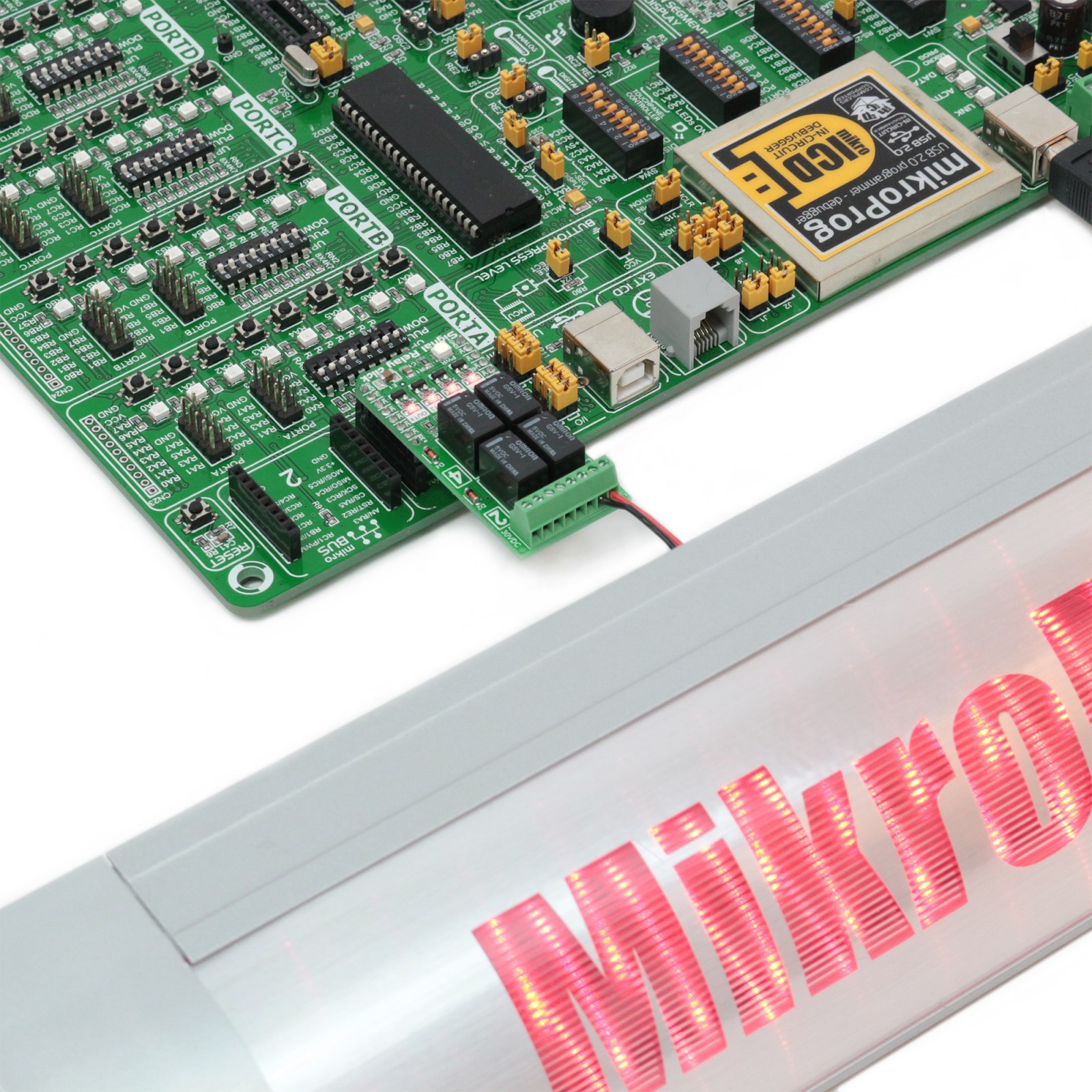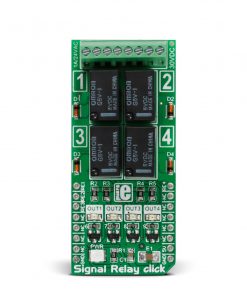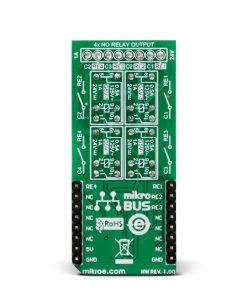Subtotal: R2,320.00
Signal Relay Click
R645.00 ex. VAT
Signal Relay Click is a compact add-on board with four relays that any host microcontroller can control. This board features four G5V-1, an ultra-miniature, highly sensitive single-pole double-throw (SPDT) relay for signal circuits from Omron. The Signal Relay Click comes equipped with the 8-pin screw terminal, two for each relay. Through them, the relays can be used to switch up to 30V DC or up to 1A/24VAC. This Click board™ makes the perfect solution for developing ON/OFF control in various home automation devices, like alarm units, lamps, heaters, and more. It can also energize bigger relay coils and contactors in industrial AC schemes (12/24V).
Signal Relay Click is supported by a mikroSDK compliant library, which includes functions that simplify software development. This Click board™ comes as a fully tested product, ready to be used on a system equipped with the mikroBUS™ socket.
Stock: Lead-time applicable.
| 5+ | R612.75 |
| 10+ | R580.50 |
| 15+ | R548.25 |
| 20+ | R527.61 |

 BEE Click
BEE Click  3D Motion Click
3D Motion Click  MP3 Click
MP3 Click 














